BROADHURST, Harry (#22)

#22
Air Chief Marshal Sir Harry BROADHURST GCB KBE DSO* DFC* AFC
Royal Air Force
(28 October 1905 – 29 August 1995)
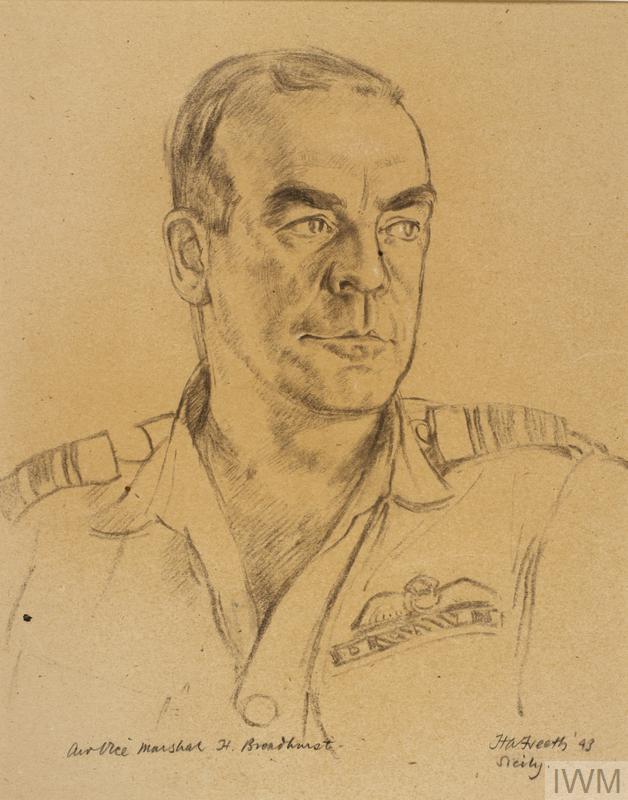
Air Vice-Marshal H Broadhurst : DSO, DFC and Bar, AFC. A head and shoulder portrait of Air Vice-Marshal H Broadhurst in uniform by Hubert Andrew Freeth (1943) © IWM Art.IWM ART LD 3577
Harry Broadhurst was born on 28th October, 1905, at Frimley, Surrey. He attended Portsmouth Grammar School, and after graduating, became a trainee surveyor. Broadhurst joined the Army and was commissioned as a 2nd lieutenant in the Royal Artillery in 1925.

ROYAL AIR FORCE AERIAL RECONNAISSANCE ON THE NORTH-WEST FRONTIER OF INDIA, 1919-1939. Vertical aerial photograph taken by a Type F.8 aerial camera, showing bombs exploding on the village of Kulala during a raid by ‘A’ Flight, No. 60 Squadron RAF. © IWM HU 91196

T E Lawrence [‘Lawrence of Arabia’, who had changed his name to ‘Aircraftman T E Shaw’ at this point in his life] on the aerodrome at Miranshah Fort in Waziristan, India (on the North West Frontier) during his service in the Royal Air Force. Lawrence was employed as a clerk in the wireless station at Miranshah. He is seen nursing his wrist which he had broken at RAF Cranwell in 1926. Lawrence wrote that the wrist “hurt for so long that nursing it became a habit”. © IWM Q 115096
Back in Britain, he was posted to 41 Squadron at Northolt on 16th September 1931. Broadhurst went to RAF Calshot under instruction on 18th September 1933, moved to 19 Squadron at Duxford on 26th November and was awarded the AFC (gazetted 1st February 1937). He joined the Personnel Staff of 2 (Bomber) Group at Andover on 2nd September 1937, leaving there on 24th January 1938 for a course at the RAF Staff College, Andover.

Broadhurst was AOC Air HQ Western Desert Post (retitled AOC Desert Air Force on 10 July 1943) between 1943 and 1944. It wasn’t always cricket. ‘DESERT AIR FORCE PLAY AIR MARSHAL SIR JOHN SLESSOR’S CRICKET XI AT UXBRIDGE.’ Original wartime caption: “Members of the Desert Air Force team signing autographs [as one does!].” Copyright: © IWM CH 16115.

Broadhurst left 111 on 24th January 1940 and went to HQ 11 Group. In February he took command of 60 Wing in France. On 20th May 1940 he destroyed a Me110 near Arras. After the Wing’s withdrawal to England in June, Broadhurst became Station Commander at Wittering.
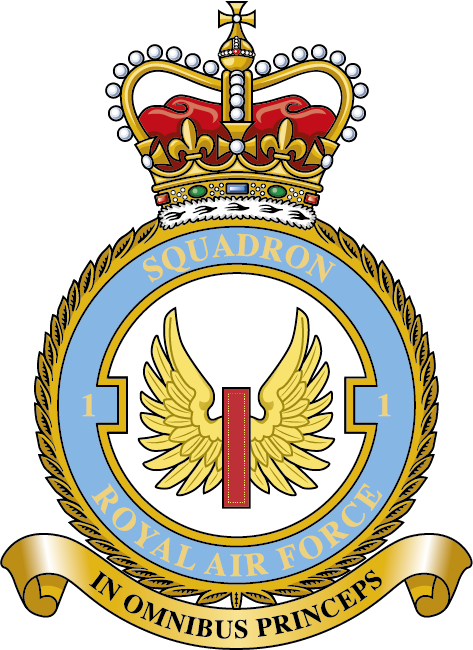
“First in all things”
During the Battle of Britain he flew occasional operational sorties with No. 1 Squadron, thus qualifying for the Battle of Britain clasp.
On 23rd December 1940 Broadhurst took command of RAF Hornchurch and apart from a few weeks in October/November 1941 he held this position until May 1942.
On 25th February 1941, flying with the Hornchurch Wing, Broadhurst destroyed a Me109 and probably a second, on 5th March he probably destroyed one and damaged another, on 17th June destroyed one and damaged another, on the 21st destroyed two, on the 24th damaged two more, on the 25th probably destroyed another two, on 3rd July shot one down and probably a second, on the 4th destroyed two, on the 7th destroyed two more and probably a third, on 24th September shot one down and on 1st October damaged another.
He was awarded the DSO (gazetted 4th July 1941) and a Bar (gazetted 19th December 1941), the citation for the latter crediting him with twelve Me109’s destroyed and probably another four.
Broadhurst’s tally of German fighters continued to increase in 1942. On 12th February, the day of the Channel Dash by the Scharnhorst and Gneisenau, Broadhurst got a probable Me109, on 27th April he damaged a Me109 and a Fw190, and on 19th August, during the Dieppe Raid, he destroyed a Fw190 and damaged three others.
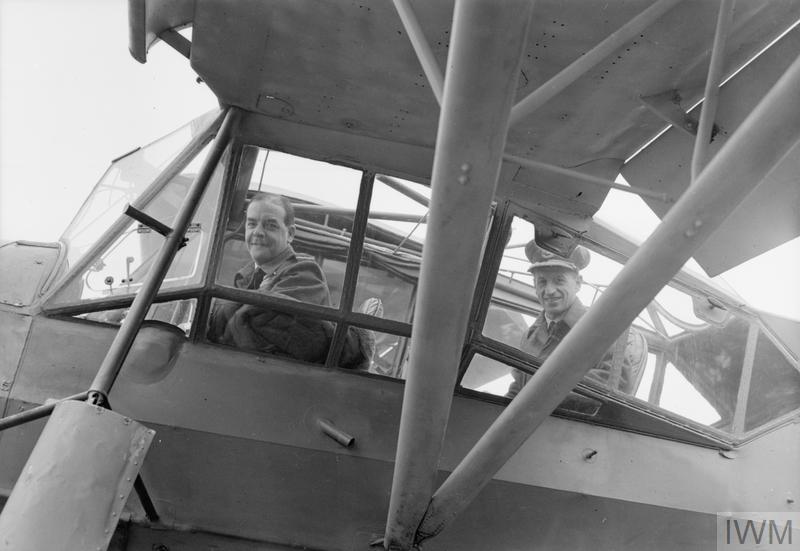
ROYAL AIR FORCE: 2ND TACTICAL AIR FORCE, 1943-1945. (CL 3862) Air Vice-Marshal J H Broadhurst, the Air Officer Commanding No 83 Group (left) and Chief of the Air Staff, Marshal of the RAF Sir Charles Portal, sitting in the cockpit of Broadhurst’s Fiesler Storch at B11/Longues, Normandy, during a visit by the Secretary of State for Air and the CAS to 83 Group Headquarters and airfields. Broadhurst acquired the captured Storch, which he flew as his personal aircraft while commanding the Desert Air Force in Italy. Copyright: © IWM CL 3862

ROYAL AIR FORCE CHIEFS IN AIRFIELD CONFERENCE IN FRANCE, 31 JULY 1944 The Deputy Supreme Allied Commander, Air Chief Marshal Sir Arthur Tedder (left) standing beside his Dakota aircraft in France discussing the latest Air Force and Army joint tactics with two Commanders of the 2nd Tactical Air Force Group, Air Vice Marshal L O Brown (centre) and Air Vice Marshal H Broadhurst (right). © IWM TR 2146

HM KING GEORGE VI WITH THE BRITISH LIBERATION ARMY IN HOLLAND, 12 OCTOBER 1944. HM King George VI with Field Marshal Sir Bernard Montgomery, the Commander of the 21st Army Group, on the King’s arrival in Holland. On the right is Air Vice Marshal H Broadhurst of the 2nd Tactical Air Force. © IWM TR 2400
Broadhurst had been Deputy SASO at 11 Group since May 1942 and returned to Hornchurch to lead the Wing to Dieppe. He was awarded a Bar to the DFC (gazetted 29th September 1942). Posted to the Middle East as SASO to the AOC Western Desert in late 1942, he took over as AOC Allied Air Forces, Western Desert in 1943. He commanded 83 Group Allied Expeditionary Air Force in 1944-45.

THE ROYAL AIR FORCE IN THE LIBYAN DESERT, MAY 1943 (© IWM TR 817) A Royal Air Force station headquarters in the West African desert showing tents and a Bristol Beaufighter aircraft in the distance.
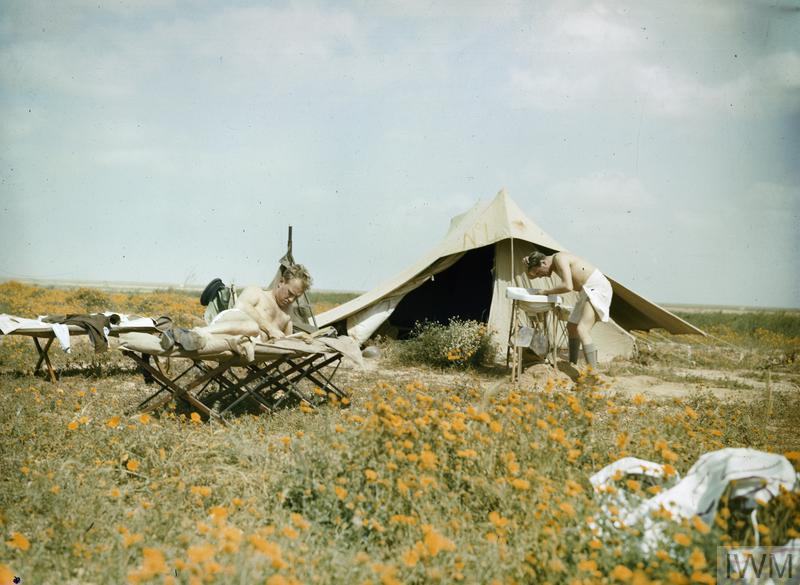
Royal Air Force pilots of No 252 Squadron in the Libyan desert, reading and washing outside their tent. © IWM TR 814

THE ROYAL AIR FORCE IN THE LIBYAN DESERT, MAY 1943. A Royal Air Force Bristol Beaufighter Aircraft (No 252 Squadron?) being serviced in the North West African Desert. Copyright: © IWM TR 816

THE ROYAL AIR FORCE IN THE NORTH AFRICAN DESERT, APRIL 1943. A Royal Air Force Intelligence Officer sounds an improvised gong to call air crews for briefing on an airfield in the North West African desert. Copyright: © IWM TR 819
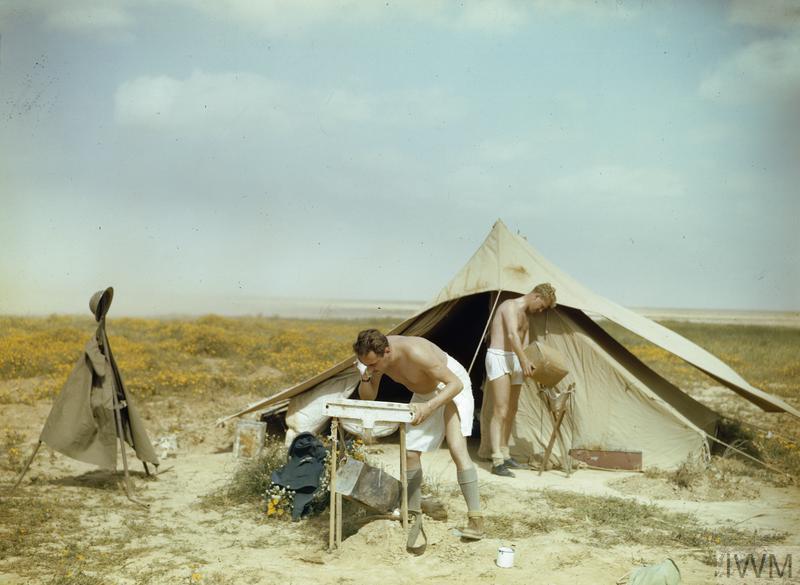
THE ROYAL AIR FORCE IN THE LIBYAN DESERT, MAY 1943. Crew of No 252 Squadron, Royal Air Force at improvised washbasins, with water from a jerry can. The tent has a double canopy, the outer canvas was to absorb the sun’s heat. Copyright: © IWM TR 815

THE ROYAL AIR FORCE IN THE LIBYAN DESERT, APRIL 1943. Royal Air Force ground crew overhauling a Bristol Beaufighter’s Hercules engines at Magrun. Copyright: © IWM TR 901

THE DESERT AIR FORCE, 1943. Airmen in tropical dress work on the Allison engine of a Curtiss Tomahawk aircraft in a makeshift hangar. The photograph is believed to have been taken at Takoradi. Copyright: © IWM TR 824
Hurricanes in The Deserts – 1943 (Pathe)
Broadhurst retired from the RAF on 1st March 1961 as an Air Chief Marshal, after a most distinguished career spanning thirty-five years. As well as his gallantry awards he was made a CB (1944), KBE (1945), KCB (1955), GCB (1960), Knight Grand Cross of the Order of Orange Nassau, and the Legion of Merit (US).
Broadhurst’s portrait was painted by Captain Cuthbert Orde in 1941.
He worked in the civil aviation industry until retiring in 1976. (Source: The Battle of Britain Monument in London)
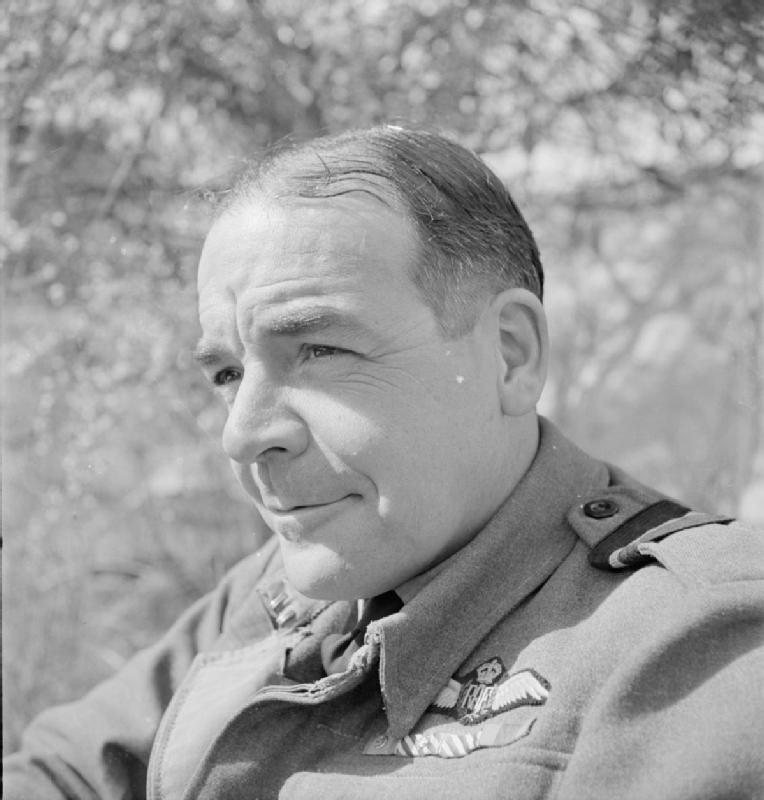
Royal Air Force Operations in the Middle East and North Africa, 1939-1943. Air Commodore H Broadhurst at the time of his appointment as Air Officer Commanding, Western Desert Air Force, but before his promotion to Air Vice-Marshal, at Air Headquarters, Western Desert.
IWM have an oral history of Harry Broadhurst but it is not currently available online
High Flight
by John Gillespie Magee Jr. (9 June 1922 – 11 December 1941)
Oh! I have slipped the surly bonds of Earth
And danced the skies on laughter-silvered wings;
Sunward I’ve climbed, and joined the tumbling mirth
Of sun-split clouds, – and done a hundred things
You have not dreamed of – wheeled and soared and swung
High in the sunlit silence. Hov’ring there,
I’ve chased the shouting wind along, and flung
My eager craft through footless halls of air…
Up, up the long, delirious burning blue
I’ve topped the wind-swept heights with easy grace
Where never lark, or ever eagle flew –
And, while with silent, lifting mind I’ve trod
The high untrespassed sanctity of space,
Put out my hand, and touched the face of God

John MaGee, who died aged 19, author of “The Pilots’ Poem”, ‘High Flight’


